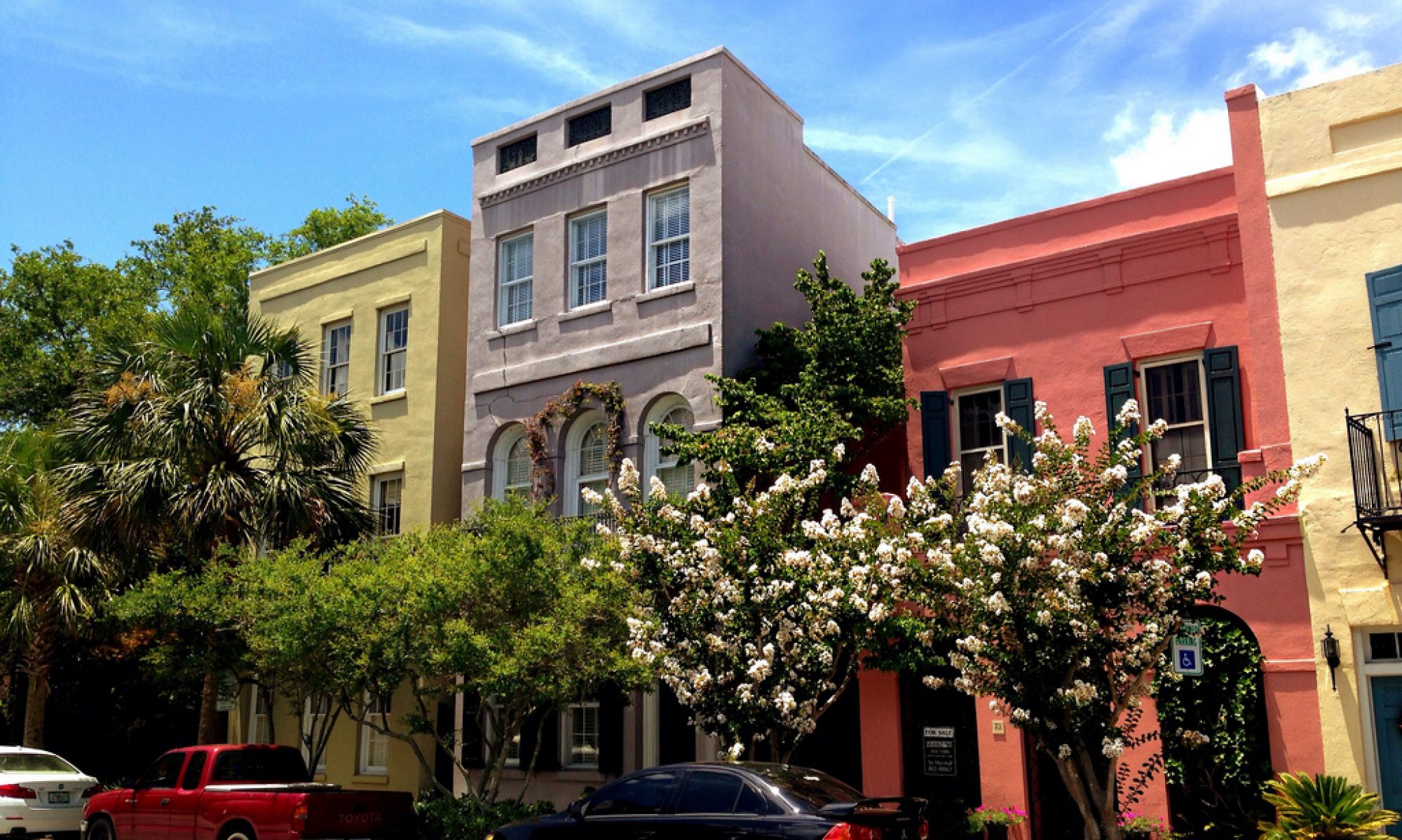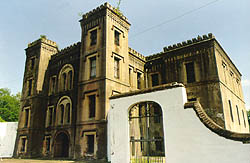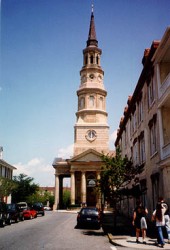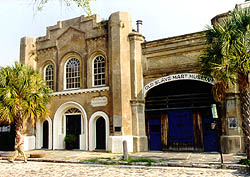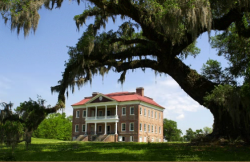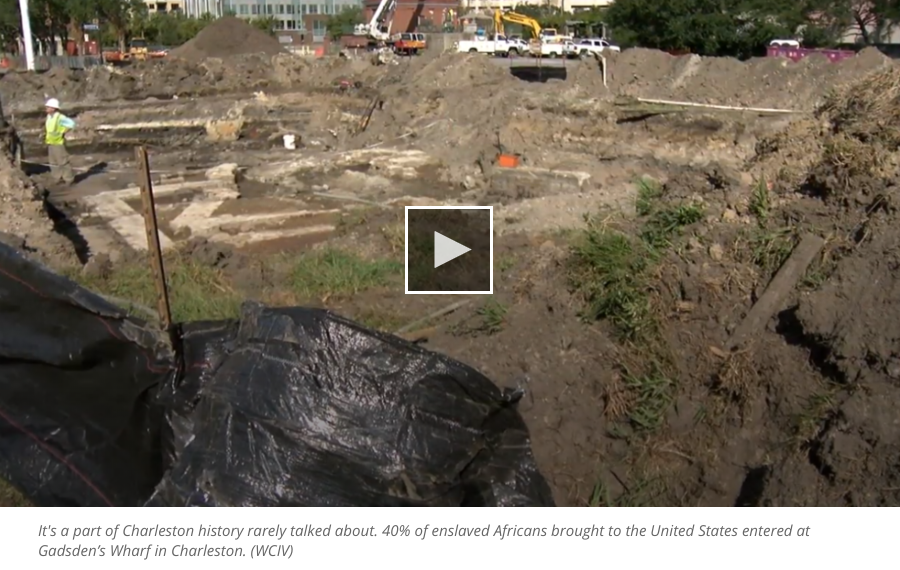
Coming in 2020! Int’l African American Museum
“Coming in 2020 on one of the most important sites in American history, the place where more enslaved African captives arrived in the U.S. and were sold than any other location, the IAAM will present the largely under told experiences and contributions of Americans of African descent.”https://iaamuseum.org/

Old Jail – Charleston, S.C.
Picture and Text below source – http://1.usa.gov/r0A2rr
21 Magazine Street Charleston, SC 29401 843-577-5245‘Now occupied by the American College of the Building Arts.’
‘Tours are available by appointment.’
‘The Old Jail building served as the Charleston County Jail from its construction in 1802 until 1939. In 1680, as the city of Charleston was being laid out, a four-acre square of land was set aside at this location for public use. In time a hospital, poor house, workhouse for runaway slaves, and this jail were built on the square…Increased restrictions were placed on slaves and free blacks in Charleston as a result of the Vesey plot (explained on the Website), and law required that all black seaman be kept here while they were in port. During the Civil War, Confederate and Federal prisoners of war were incarcerated here. It is one of more than 1400 historically significant buildings within the Charleston Old and Historic District.’
St. Philips Episcopal Church – a Landmark
Listed in National Register of Historic Places.
Picture Source – http://1.usa.gov/nELP61
146 Church Street, Charleston, SC – 29401 843-722-7734 www.stphilipschurchsc.org/St. Philips ‘houses the oldest congregation in South Carolina and was the first Anglican church established south of Virginia.
This church is the third building to house the congregation, which was formed by Charles Town colonists.
The first church, built in 1681, was a small wooden building located at the present site of St. Michael’s Episcopal Church.
In the early 18th century, the congregation built a second brick church at the site of the current church.
It’s construction was partially funded by duties on rum and slaves.
After suffering from one fire that was extinguished by a black slave, who was given his freedom for this act, the church completely burned in 1835.
The current St. Philip’s was constructed from 1835 to 1838 by architect Joseph Hyde, while the steeple, designed by E.B. White, was added a decade later.’
Source – National Park Service
For more information on the church extending into the street and prominent people buried in the graveyard visit the National Park Service Website above.
Old Slave MarOld Slave Mart Museum – Charleston, S.C.
Picture and Text Below Source – http://1.usa.gov/bYIbTy
6 Chalmers Street, Charleston, SC – 29401843-958-6467
‘The Old Slave Mart, located on one of Charleston’s few remaining cobblestone streets, is the only known extant building used as a slave auction gallery in South Carolina. Once part of a complex of buildings, the Slave Mart building is the only structure to remain.
When it was first constructed in 1859, the open ended building was referred to as a shed, and used the walls of the German Fire Hall to its west to support the roof timbers.
Slave auctions were held inside.
The interior was one large room with a 20-foot ceiling, while the front facade was more impressive with its high arch, octagonal pillars and a large iron gate.
During the antebellum period, Charleston served as a center of commercial activity for the South’s plantation economy, which depended heavily upon slaves as a source of labor. Customarily in Charleston, slaves were sold on the north side of theExchange Building (then the Custom House)…
Around 1878, the Slave Mart was renovated into a two-story tenement dwelling. In 1938, the property was purchased by Miriam B. Wilson, who turned the site into a museum of African American history, arts and crafts.’
It is owned by the City of Charleston.
Hours – Monday-Saturday, 9:00am to 5:00pm.
Call 843-958-6467 for information.
Admission fees are charged.
Drayton Hall – Southern Plantation in Charleston, S.C.
Picture Source – http://www.draytonhall.org
‘Drayton Hall is the closet plantation to Charleston. It is the only plantation home in Charleston not destroyed in the Civil War. The owners fled leaving the property to the slaves. The slaves saw smoke near Magnolia Plantation and put put yellow quarantine flags at the gate to make Union soldiers think there was malaria present.’ Adapted from article about Charleston by Judith Evans.
‘Drayton Halls story spans three centuries of American History. It is the oldest surviving example of Georgian Palladian architecture in the U.S. and one of the only pre-Revolutionary houses that remain in close to original condition today.’ See DraytonHall.org for more.
Open 7 days a week except major holidays.
Monday through Saturday: Main Gates: 9:00 a.m.-3:20 p.m. (Exit gate closes at 5 p.m.)
Museum Shop: 9:00 a.m.-4:45 p.m.
First Tour: 9:30 a.m.
Last Tour: 3:30 p.m.
House Tours: Starting on the half hour at 9:30am. Please arrive at least 20 minutes before the start of the tour.
- Connections: From Africa to America: 10:45 a.m., 12:45 p.m., and 2:45 p.m.
- Voices of Drayton Hall: An Interactive Landscape Tour on DVD: Available for complimentary rental throughout the day; enjoy at your own pace.
Sundays: Main Gates: 11:00 a.m.-3:20 p.m. (Exit gate closes at 5 p.m.)
Museum Shop: 11:00 a.m.- 4:45 p.m.
First Tour: 11:30 a.m.
Last Tour: 3:30 p.m.
House Tours: Starting on the half hour at 11:30am. Please arrive at least 20 minutes before the start of the tour.
‘To help ensure a thoroughly enjoyable experience:
Visitors wishing to take a house tour should arrive at the front gate at least 20 minutes before the start of the tour to allow for ticket transaction, parking, and check-in.
If a house tour is sold out, you will be offered the next available tour of your choice.In addition to the house tour, there are other daily activities and programs available, and all are included in the price of regular adult admission-just click on Things To Do in the right hand column.
You can also save time by purchasing your tickets here. Please note that all visitors must first stop at the front gate before entering the site.’
